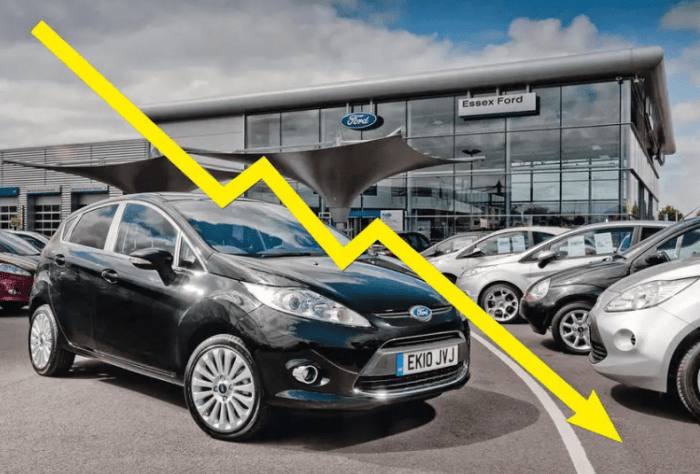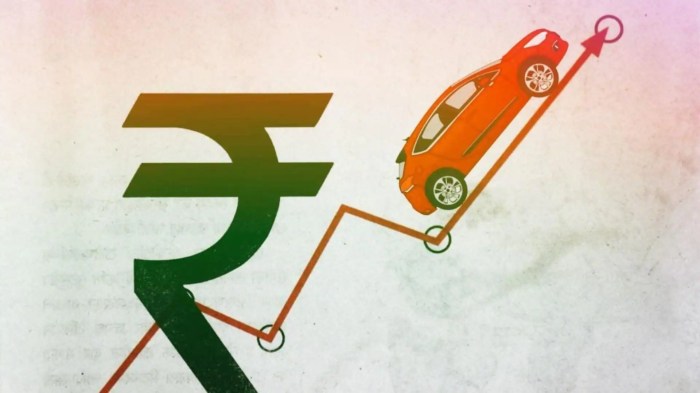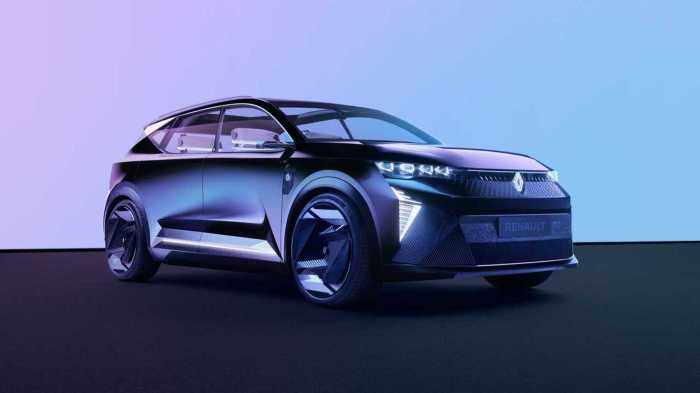New Car Price Prediction 2024
Factors Influencing New Car Prices in 2024
New car price prediction 2024 – Several interconnected factors are projected to significantly influence new car prices in 2024. These range from global supply chain issues and economic conditions to government regulations and evolving consumer preferences. Understanding these dynamics is crucial for both manufacturers and consumers navigating the automotive market.
Impact of Microchip Shortages on Projected Car Prices
The lingering effects of the global microchip shortage continue to constrain automotive production. A lack of readily available semiconductors delays manufacturing, reducing the overall supply of new vehicles. This reduced supply, coupled with relatively consistent demand, exerts upward pressure on prices. The impact is particularly noticeable in vehicles with advanced driver-assistance systems (ADAS) and other technology-heavy features, which require a higher number of microchips.
Inflation and Rising Interest Rates’ Influence on Affordability
Inflation and increased interest rates directly impact the affordability of new cars. Higher inflation increases the cost of raw materials and manufacturing, leading to higher sticker prices. Simultaneously, rising interest rates increase the cost of financing, making monthly payments more expensive for consumers. This combination creates a double whammy, reducing the number of potential buyers and potentially leading to price stagnation or even slight decreases in demand for certain segments.
Influence of Raw Material Costs on Manufacturing Expenses
Fluctuations in the prices of raw materials, such as steel, aluminum, and plastics, directly affect manufacturing costs. Significant increases in these costs are typically passed on to consumers in the form of higher vehicle prices. The ongoing global economic uncertainty and geopolitical events contribute to volatility in raw material markets, making accurate price prediction challenging.
Role of Supply Chain Disruptions on Vehicle Availability and Pricing
Supply chain disruptions, extending beyond the microchip shortage, continue to impact vehicle availability and pricing. Delays in the delivery of parts and components lead to production bottlenecks, further restricting supply. These disruptions often force manufacturers to prioritize certain models or trim levels, affecting pricing strategies and potentially leading to higher prices for in-demand vehicles.
Comparison of Price Changes Across Car Segments
The following table compares projected average price changes across different car segments from 2023 to 2024. These figures are based on industry analyses and expert projections, and may vary depending on the specific make and model.
| Segment | 2023 Average Price (USD) | Projected 2024 Average Price (USD) | Percentage Change |
|---|---|---|---|
| Compact | 25000 | 26500 | 6% |
| SUV | 35000 | 37000 | 5.7% |
| Luxury | 60000 | 63000 | 5% |
Predictive Modeling Techniques for New Car Prices

Source: carfromjapan.com
Accurate prediction of new car prices requires sophisticated modeling techniques that consider a multitude of factors. Econometric models, machine learning algorithms, and time series analysis are frequently employed to forecast price trends.
Econometric Models for Forecasting Car Prices
Econometric models use statistical methods to quantify the relationship between car prices and various economic and market variables. These models can incorporate factors like inflation, interest rates, fuel prices, and consumer confidence to generate price forecasts. For example, a model might show a strong correlation between rising interest rates and a slight decrease in the demand for higher-priced vehicles.
Application of Machine Learning Algorithms for Price Prediction
Machine learning algorithms, particularly those based on regression techniques, can be effectively used for price prediction. These algorithms analyze large datasets of historical car prices, specifications, and market conditions to identify patterns and relationships that may not be apparent through traditional statistical methods. Algorithms like Random Forests or Gradient Boosting can handle complex interactions between variables to improve prediction accuracy.
Comparison of Statistical Methods Used in Price Forecasting
Various statistical methods are employed in price forecasting, each with its strengths and weaknesses. Linear regression is a simple yet effective technique for modeling linear relationships, while more advanced methods like ARIMA (Autoregressive Integrated Moving Average) are better suited for time series data with trends and seasonality. The choice of method depends on the specific data and the complexity of the relationships being modeled.
For example, ARIMA might be preferred when analyzing historical sales data to identify seasonal fluctuations in demand.
Use of Time Series Analysis to Identify Price Trends
Time series analysis is crucial for identifying trends and seasonality in historical car price data. By analyzing past price patterns, we can identify recurring trends, such as price increases during periods of economic growth or seasonal discounts during specific months of the year. This information can significantly enhance the accuracy of future price predictions. For instance, analyzing five years of data might reveal a consistent price drop in November and December, informing future price projections.
Hypothetical Predictive Model
A hypothetical predictive model for new car prices could incorporate variables such as: inflation rate, interest rates, average price of raw materials (steel, aluminum), microchip availability index, consumer confidence index, average used car prices, and fuel efficiency standards. The model would use a combination of regression techniques and time series analysis to forecast prices for different car segments, considering seasonal variations and potential economic shocks.
The methodology would involve cleaning and preparing the historical data, selecting appropriate variables, training the model, and evaluating its performance using metrics such as mean squared error.
Predicting new car prices for 2024 is challenging, with various economic factors influencing the market. A good example of this price volatility can be seen in the used car market; for instance, you can check the current market trends by looking at the mehran car price in pakistan new which reflects broader economic pressures. Therefore, accurate predictions for 2024 require careful consideration of these ongoing shifts in the automotive sector.
Analysis of Historical Car Price Data: New Car Price Prediction 2024
Analyzing historical car price data provides valuable insights into past trends and helps inform future predictions. Examining price fluctuations over the past five years reveals key periods of significant change and their underlying causes.
Detailed Analysis of New Car Price Trends (Past Five Years)
Over the past five years, new car prices have experienced significant volatility. Initially, prices remained relatively stable, followed by a period of sharp increases driven primarily by the microchip shortage and supply chain disruptions. Subsequently, price growth has moderated somewhat, although prices remain elevated compared to pre-pandemic levels. Specific data points would require access to comprehensive industry sales figures.
Key Periods of Significant Price Fluctuations and Their Causes

Source: newsbytesapp.com
Significant price increases were observed in 2021 and 2022, largely attributed to the global microchip shortage and increased raw material costs. These factors limited production and increased manufacturing expenses, resulting in higher prices for consumers. Conversely, periods of slight price moderation were observed during economic downturns or periods of increased inventory.
Seasonal Variations in New Car Pricing
Seasonal variations in new car pricing are common, with prices often slightly lower during the off-season (typically late fall and winter) and higher during peak demand periods (spring and summer). Dealers often offer incentives during slower periods to stimulate sales, leading to lower prices for consumers.
Visual Representation of Historical Data Trends
A line graph visualizing the average new car price over the past five years would show a relatively flat trend initially, followed by a sharp upward trend in 2021 and 2022, and a subsequent leveling off. The x-axis would represent time (years), and the y-axis would represent the average new car price (in USD). Key features would include the steep incline during the height of the microchip shortage and the subsequent plateauing of prices.
The graph would also visually represent the seasonal variations, with slight dips during the off-season months.
How Historical Data Informs Future Price Predictions
Historical data serves as the foundation for predictive modeling. By identifying past trends, seasonal variations, and the impact of specific events (like the microchip shortage), we can develop more accurate models for forecasting future prices. The analysis of historical data allows for the identification of key variables and their influence on price fluctuations, leading to more robust and reliable predictions.
Impact of Government Policies and Regulations
Government policies and regulations significantly influence the automotive industry, impacting both manufacturing costs and consumer affordability. Fuel efficiency standards, environmental regulations, and potential subsidies or tax incentives all play a role in shaping new car prices.
Influence of Fuel Efficiency Standards on Car Manufacturing Costs, New car price prediction 2024
Stringent fuel efficiency standards often necessitate investments in new technologies and manufacturing processes, increasing the cost of producing vehicles. Manufacturers may pass these increased costs on to consumers in the form of higher prices. However, in the long run, these standards can lead to greater fuel efficiency and lower operating costs for consumers.
How Environmental Regulations Affect Vehicle Production and Pricing

Source: motor1.com
Environmental regulations, such as emission standards and mandates for electric vehicles, can influence both production processes and the final price of vehicles. Meeting stricter environmental standards may require manufacturers to adopt more expensive technologies, potentially leading to higher prices. Conversely, government incentives for environmentally friendly vehicles can offset some of these increased costs.
Impact of Potential Government Subsidies or Tax Incentives on Car Prices
Government subsidies or tax incentives aimed at promoting the adoption of electric vehicles or other environmentally friendly technologies can significantly influence car prices. These incentives can make such vehicles more affordable for consumers, increasing demand and potentially leading to greater competition and price reductions in the market.
Upcoming Legislation Affecting the New Car Market in 2024
Several countries are implementing or considering new legislation related to vehicle emissions, safety standards, and the adoption of electric vehicles. These legislative changes will likely influence the manufacturing costs and market dynamics of new cars in 2024. Specific details would depend on the jurisdiction and the legislation being enacted.
Potential Positive and Negative Effects of Government Policies
- Positive Effects: Increased consumer affordability through subsidies, improved fuel efficiency leading to lower operating costs, promotion of environmentally friendly vehicles.
- Negative Effects: Increased manufacturing costs due to stricter regulations, potential price increases due to new technology requirements, reduced vehicle choice due to specific mandates.
Consumer Demand and Market Trends
Consumer preferences, technological advancements, and the dynamics of the used car market all significantly impact new car prices. Understanding these trends is essential for accurate price prediction.
Impact of Consumer Preferences on Pricing
The growing preference for SUVs and electric vehicles is significantly influencing pricing. Increased demand for SUVs has driven up their prices, while the still-developing electric vehicle market is characterized by a mix of high-end luxury models and more affordable options, depending on battery technology and features.
How Technological Advancements Influence Car Prices
Technological advancements, such as advanced driver-assistance systems (ADAS), infotainment systems, and connected car technologies, often increase the cost of manufacturing. These features can significantly increase the price of a vehicle, particularly in higher trim levels.
Evolving Preferences of Different Consumer Demographics
Different consumer demographics exhibit varying preferences and buying behaviors. Younger consumers may prioritize technology and fuel efficiency, while older consumers may prioritize safety and comfort. These preferences influence demand for different vehicle types and features, impacting pricing dynamics.
Effect of Used Car Prices on the New Car Market
The prices of used cars can indirectly influence the new car market. High used car prices can incentivize consumers to purchase new vehicles, potentially increasing demand and sustaining higher prices for new cars. Conversely, low used car prices can decrease demand for new vehicles.
Structured Overview of Consumer Behavior and Market Effect
Consumer behavior is a complex interplay of preferences, affordability, and technological advancements. The shift towards SUVs and electric vehicles, driven by environmental concerns and changing lifestyles, is a major factor influencing pricing. Technological innovations continue to drive up prices, particularly for feature-rich models. The availability and pricing of used cars create a competitive dynamic that affects overall demand and pricing strategies for new vehicles.
General Inquiries
What are the biggest uncertainties in predicting new car prices for 2024?
The biggest uncertainties stem from the unpredictable nature of global events (e.g., geopolitical instability, further supply chain disruptions) and the pace of technological advancements in the automotive sector.
How much will electric vehicle prices change in 2024?
Predicting EV price changes specifically requires a detailed analysis of battery material costs, government incentives, and consumer adoption rates. Prices may vary significantly depending on the vehicle’s range, features, and brand.
Are used car prices expected to influence new car prices in 2024?
Yes, used car prices significantly impact the new car market. High used car values can influence consumer demand for new vehicles, potentially affecting pricing strategies.





















